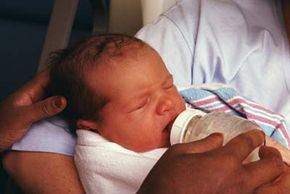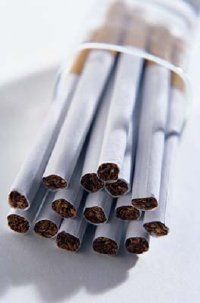In June 2006, the Surgeon General of the United States released a report detailing all of the ways that secondhand smoke constitutes a major health hazard. If you read this news item, you might have thought, Didn't we already know that?
Well, yes, we did. It's been widely known for some time that secondhand smoke is dangerous, dating back to the Surgeon General's last report on the topic 20 years ago. But what we didn't understand -- or what we underestimated -- was the true extent of the danger. According to the new report, any exposure to secondhand smoke radically increases the risk of being stricken by many serious health ailments, such as heart disease and lung cancer.
Advertisement
But can secondhand smoke really be so deadly? Surely it can't be any worse than the thousands of other air pollutants that surround us. And is there any way to protect yourself against this apparent health epidemic? We will answer these questions -- and more -- in the following sections:
- What Is Secondhand Smoke? If you think you already know everything about secondhand smoke, guess again. Are you aware that there are two different types of secondhand smoke: sidestream and mainstream? Sidestream smoke refers to smoke coming from the lit end of a cigarette, while mainstream smoke is exhaled directly from a smoker. In this section, we will explore the differences between these two types of secondhand smoke, and we will tell you which is the more dangerous and why. We will also examine some of the nasty compounds in secondhand smoke and what makes them so dangerous.
- The Health Effects of Secondhand Smoke Essentially, exposure to secondhand smoke is as harmful as actual smoking. Heart disease is an enormous problem worldwide that is only exacerbated by cigarette smoke. Exposure to secondhand smoke has also been shown to increase the risk of developing lung cancer and nasal cancer. In addition, asthma, ear infections, and sudden infant death syndrome have been linked to secondhand smoke. In this section, we will examine all of the possible health problems that can result from exposure to secondhand smoke.
- How to Avoid Secondhand Smoke Although secondhand smoke poses a serious health problem, it is actually quite easy to combat -- just stay away from it. Unfortunately, this is easier said than done. First, we will tell you how much secondhand smoke it takes to produce a noticeable change in your body; the new guidelines established by the Surgeon General are stricter than you might think. Next, we will offer advice for making your life as smoke-free as possible. Whether you're dealing with secondhand smoke at home, at work, or on vacation, we have some suggestions to clear the air.
- Antismoking LawsAntismoking laws refer to ordinances passed by local governments to prevent smoking in public places such as bars or restaurants. With the exception of air travel, there are no federal antismoking laws in place. However, there have been a number of statewide smoking bans passed in the past few years. Beginning with California and then slowly sweeping across the country, more and more towns have become smoke-free. In this section, we will explore the effect these laws have had on the population at large and on businesses.
This information is solely for informational purposes. IT IS NOT INTENDED TO PROVIDE MEDICAL ADVICE. Neither the Editors of Consumer Guide (R), Publications International, Ltd., the author nor publisher take responsibility for any possible consequences from any treatment, procedure, exercise, dietary modification, action or application of medication which results from reading or following the information contained in this information. The publication of this information does not constitute the practice of medicine, and this information does not replace the advice of your physician or other health care provider. Before undertaking any course of treatment, the reader must seek the advice of their physician or other health care provider.
Advertisement








